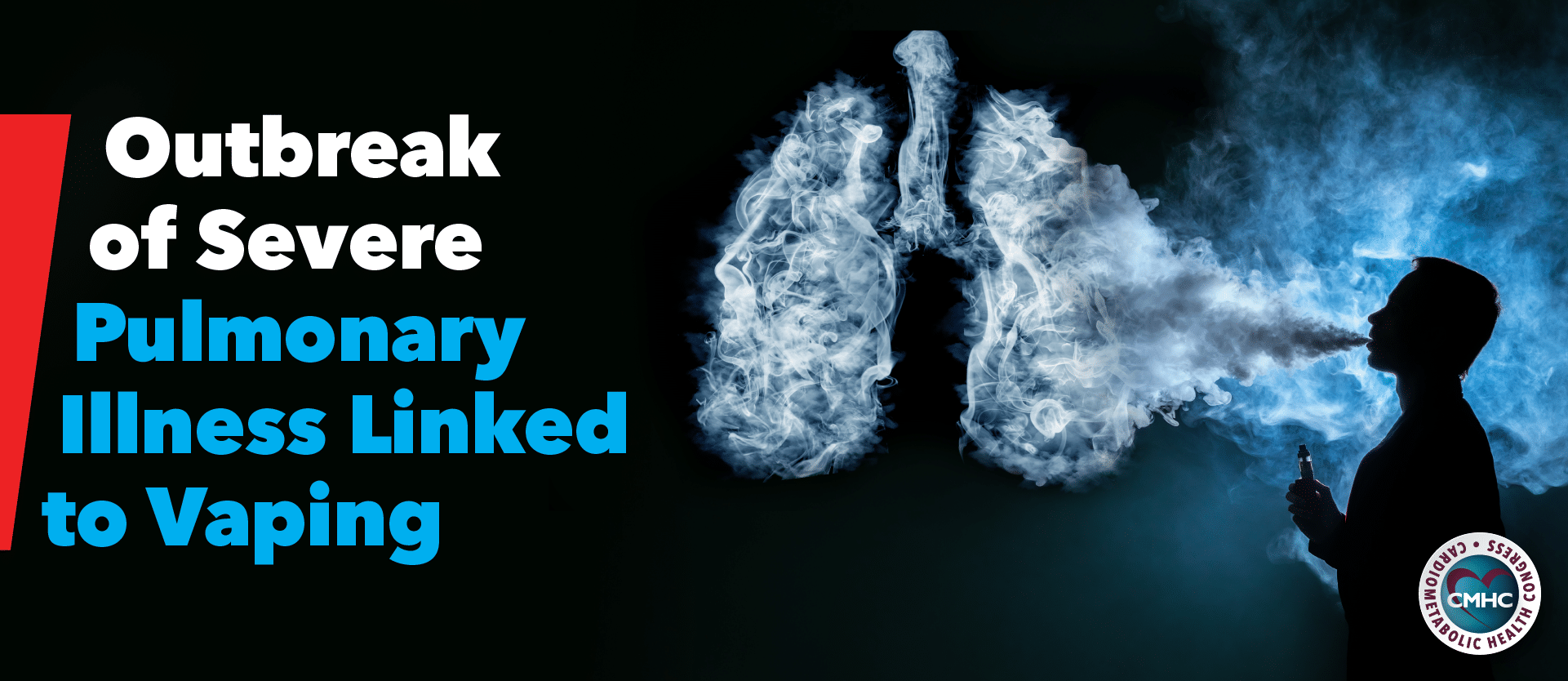As of October 8, 2019 there have been 1,129 reported cases of lung illness and 26 deaths directly tied to e-cigarette use in the United States across 41 states and one territory. The alarming number continues to rise, with the number of severe pulmonary disease cases tripling in the past month alone.
The CDC alongside state and federal partners have issued cautionary statements advising the public to refrain from vaping or using any type of e-cigarette product – including liquid refills containing marijuana – as the investigation continues.
Public health officials have not identified the underlying cause of the multistate outbreak, although many believe chemicals used in vaping products may be to blame. While e-cigarette aerosol may contain fewer noxious chemicals than cigarette smoke, it is not harmless and may expose users to a host of toxic substances – such as ultra-fine particles, diacetyl, heavy metals, and volatile organic compounds. While the FDA has found that the same vitamin E-derived oil compound was ingested via marijuana products by several ill patients, the true cause of the epidemic – as well as the long-term repercussions of vaping – remain unknown.
Pulmonary Illness Presentation
Current knowledge of the condition, its presentation, and progression has been gathered from state reports, which detail the primarily respiratory symptoms of patients. Coughing, shortness of breath, and chest pain were among the most common clinical characteristics, while some patients also experienced gastrointestinal issues – nausea, vomiting, or diarrhea – and non-specific symptoms, such as fatigue, fever, or weight loss. Despite no evidence of infectious disease, fever, elevated heart rate, and elevated white blood cell count have also been reported.
Public health officials and physicians have published preliminary reports, detailing the clinical presentation of the pulmonary illness in 53 case patients. Of these, 83% were male with a median age of 19 years. Nearly all patients presented with respiratory symptoms (98%), gastrointestinal symptoms (81%), and constitutional symptoms (100%); all had bilateral infiltrates on chest imaging. One death was reported, while 94% of patients were hospitalized, 32% underwent intubation and mechanical ventilation. The majority of case patients (84%) reported having used a THC e-cigarette device in the last 90 days, however, the products were all different.
According to reports, the onset of the illness and associated symptoms varied from merely a few days to several weeks. Treatment modalities include supplemental oxygen, assisted ventilation, corticosteroids – which demonstrated clinical improvement – and antibiotic therapy, although it alone has not shown consistent results.
Prevalence of Vaping
The prevalence of vaping has not only grown in the United States, but it has increased dramatically across the globe – from 7 million users in 2011 and 35 million in 2016 to a projected 55 million users by 2021.
Authors of state reports also highlight the alarming growth in the number of mean monthly visits related to severe respiratory illness alone over this summer. The rate of visits from June to August of 2019 was double that of the previous year, and may be attributable to the meteoric rise in popularity of e-cigarette products, especially among the American youth. Vaping was reported by 20.8% of U.S. high school students in 2018, nearly double the number of 2017 (11.7%).
Vaping and the use of e-cigarette products among young people has been a growing cause of concern, as studies continue to reveal its surging popularity. According to a 2018 study, over 50% of U.S. adult e-cigarette users are under the age of 35, while a significant proportion of those users are teens. Last year, a CDC report revealed that e-cigarettes were the most popular product among 5 million high school and middle school students who admitted to using tobacco within the past month.
CDC Recommendations
As the widespread investigation continues, the CDC cautions the public against using e-cigarette products and maintains that regardless of the current epidemic, teens, young adults, pregnant women, and non-smokers should not use these products. Meanwhile, clinicians are encouraged to report any possible cases of pulmonary illness associated with vaping to local or state health departments. As per the health advisory, if e-cigarette-associated lung disease is suspected, a detailed history of substances used, sources, and devices used should be obtained. If possible, any remaining products, devices, or liquids should be gathered for testing.
Experts and critics have long cautioned the public against e-cigarette use due to a lack of substantial clinical data and knowledge of the long-term consequences. While public health officials and organizations evaluate the hundreds of recent cases of severe pulmonary disease related to vaping, they strongly advise refraining from e-cigarette use. Despite the lack of a definitive cause, the multistate outbreak of severe lung illness represents a burgeoning clinical syndrome and additional efforts are needed to identify its pathophysiology before further recommendations can be made.


















